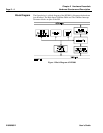
21020285 D User’s Guide
Chapter 1 Product Overview
Page 1 - 2 About the Rimfire 3880 Design
About the
Rimfire 3880
Design
The Rimfire 3880 contributes to the family of VME/SCSI adapters already
available from Ciprico with a unique design that addresses the particular needs
of high bandwidth applications (applications that require large amounts of data
to be transferred quickly in order to be interpreted for use—applications such
as imaging or data acquisition for weather prediction, for example). These
applications are different from transaction intensive applications that focus on
low command overhead. High bandwidth applications require:
• extremely fast data transfer rates
• highly efficient use of native bus structures
With its buffering scheme and its effective co-ordination of the VMEbus and
SCSI bus, the RF3880 fulfills both requirements for high bandwidth
applications.
Latest Bus
Specifications
Part of the RF3880’s contribution to the needs of high bandwidth applications
is derived from designing to the latest bus specifications for VME and SCSI.
To make the most of the VMEbus capabilities, the RF3880 implements 64-bit-
wide block transfer mode. On the SCSI side, the QLogic FAS256 chip is
effectively applied to implement Fast, 16-bit SCSI data transfers.
Buffering
scheme
Additionally, the RF3880 design maximizes the efficiency of both buses by
using a data buffer to decouple one bus operation from the other.
• Data transfers on the SCSI bus can occur completely independently of
the VMEbus activity.
• Data on either side of the buffer can flow in opposite directions
• The buffer is large enough (512 Kbytes) to be used for temporary storage.
Startup delays on the SCSI bus are eliminated because data (or space) in the
buffer is available as soon as the SCSI device switches to data phase, thus
increasing system throughput. On the VME side, command I/O processing can
occur at the same time data is being transferred to/from the SCSI bus.


















